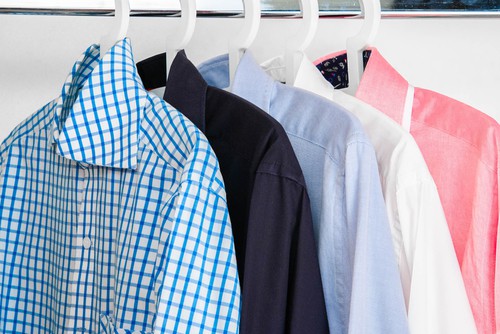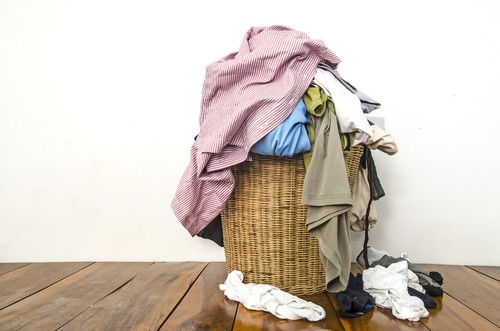With the emergence of professional Laundry cleaning companies, more people are outsourcing their laundry cleaning to these companies and in the process saving themselves a lot of time and energy that would have otherwise been spent doing their own laundry. What’s even better, professional laundry cleaners offer a comprehensive package that goes beyond cleaning and also includes ironing and pressing at a cost that most people can afford. If between your busy schedule at work and spending quality time with your family you have little if any time to do your laundry, you should consider getting a professional cleaning company to do your laundry for you. A professional cleaning company will often offer two options where cleaning your dirty laundry is concerned. These options are laundry and dry cleaning services. The decision as to which cleaning is ideal will be reached after assessing how dirty each laundry item is, its cleaning instructions and the type and extent of stains if any. So what is the difference between laundry and dry cleaning? Below is a brief that discusses these two cleaning options and will help you differentiate between the two.
Dry cleaning:
Dry cleaning is the process of cleaning garments using non- water based solvents. This type of cleaning is referred to as dry cleaning because water is not used during the cleaning process. Instead, chemical solvents, in most cases perchloroethylene (PERC) are used to clean clothes. The clothes are loaded in to a machine and goes through a process known as tumbling where solvents are used to dissolve dirt, grease among other stains.
It is important to note that some stains may not come off even with dry cleaning. In such cases, spotting solvents and other stain removal liquids are used to remove or loosen the stains before the garment is placed in the dry cleaning machine. A typical dry cleaning cycle lasts about 15 minutes or less. Within the first two to three minutes, loose dirt dissolves into the perchloroethylene solvent. As the process continues, more dirt is dissolved until no dirt is left on the clothes. The clothes then go through a rinse cycle with fresh solvent from the pure solvent tank. Clothes from the dry cleaning are then dried, mostly by tumbling through a stream of warm air that evaporates any solvent left on the clothes after rinsing. The clothes are then pressed and folded and can now be collected or delivered to the owners.
Dry cleaning is mostly used to clear delicate garments that cannot withstand any other type of cleaning without their quality being compromised. The process comes with many advantages that make it ideal for delicate cloth items. Some of these advantages include:
– The process reduces shrinkage and distortion that may result when water is used to clean certain garments.
– Originality of the materials used to make dry cleaned garments is maintained which works to increase the lifespan of these garments.
– The process minimizes discoloration and bleeding making garments remain brighter for longer.
– The process is effective in getting grease and oil stains off garments.
Laundry cleaning:
Otherwise known as wet cleaning, laundry cleaning generally involves the use of water and cleaning detergents in the cleaning process. Clothes are immersed in water and detergent used to remove dirt and stains from the clothes. The clothes are then rinsed using clean water to get rid of the cleaning detergent. All this happens in a washing machine.
All clothes from the washing machine will come out damp. They can then be placed in a drier or hung out to dry. Once the clothes are dry, they are pressed or steamed to remove any creases and soften them. There are many advantages associated with wet cleaning.
Some of these advantages include:
– The cleaning process does not involve the use of toxic chemicals some of which may be too much for people with sensitive skin. Some of these chemicals are also harmful to the environment though some steps have taken to introduce dry cleaning chemicals that are safer and friendlier to the environment.
– Wet cleaning process is more energy efficient when compared to dry cleaning.
– Wet cleaning is cheaper than dry cleaning
– The process does not leave that chemical smell that comes with dry cleaning. Some clothing and softeners may however come with some scents that are designed to leave some fragrance on the laundry.
From all the informed discussed above it clear that there are a number of differences between dry cleaning and laundry cleaning. Some of the obvious differences are:
– Water is used in the case of laundry cleaning while no water is used throughout the dry cleaning process.
– The dry cleaning machine dissolves dirt and stains and still dries the solvents from cleaned garments. On the other hand, wet cleaned clothes are either dried in the drier or hung out to dry.
– Dry cleaning is effective in getting rid of grease and oil stains while wet cleaning will take care of common dirt and non- oil stains
– Dry cleaning is much costly and energy intensive when compared to wet cleaning.
The decision on whether to dry clean or wet clean your clothes will depend on the type of material used to make each garment and the type of stains and dirt involved. In the case of the material used for making garments, you can simply use the garment label as a guide to identify any restrictions where cleaning is concerned. In the case of stains on your laundry a professional cleaner will offer the best guidance as to what method is ideal.
If you have a load of laundry to be cleaned, it is possible that some of your garments will be wet cleaned while others will be dry cleaned to preserve their quality and shape. The bottom line in this case is that both methods have their advantages and non can be said to be better over the other. The right cleaning method should simply be used for the right fabric, stains and dirt. This way you realize the full benefits that come with each cleaning method.


